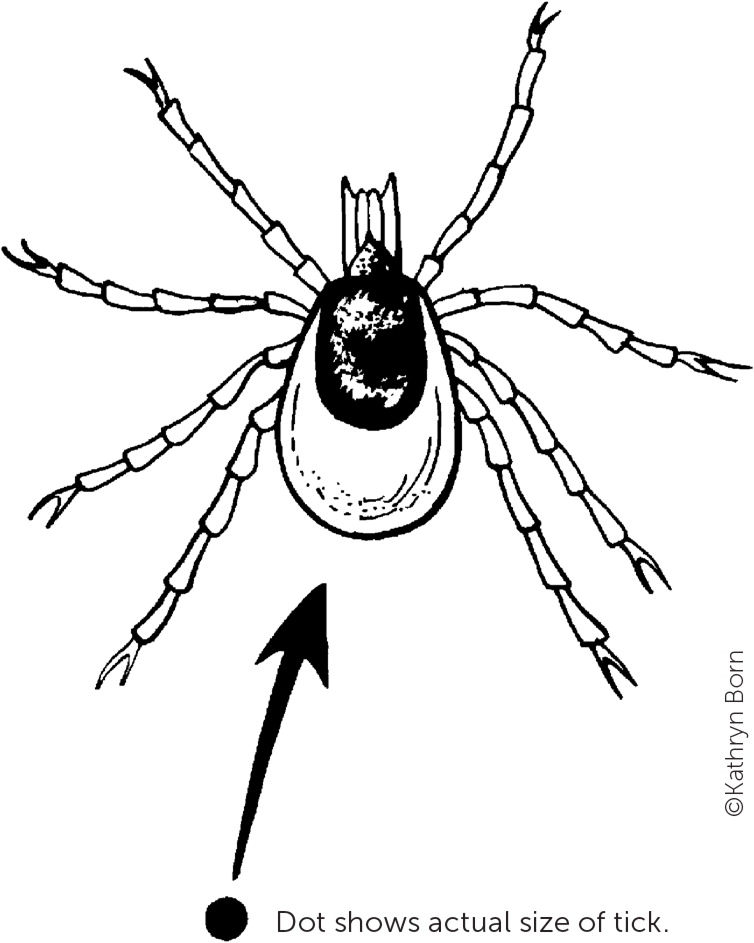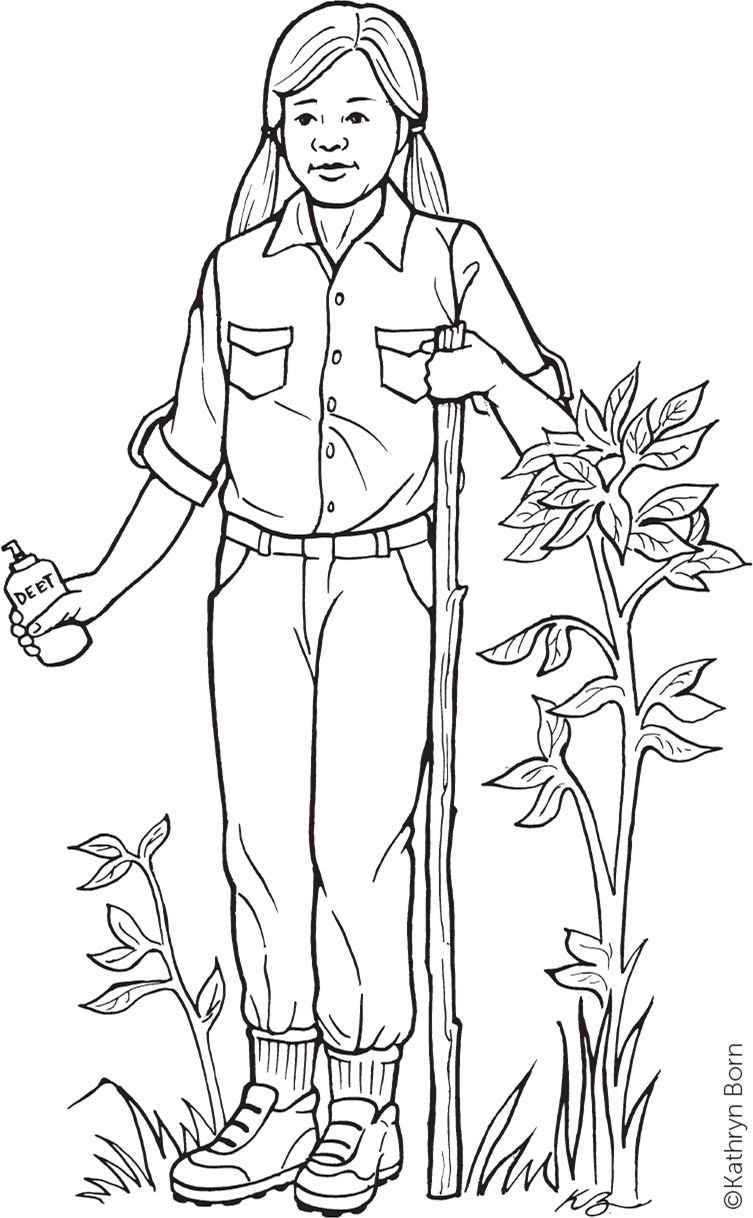
Am Fam Physician. 2022;106(2):online
Related article: Arthropod Bites and Stings
Avoiding ticks and places where ticks could be is the best way to keep from getting sick from a tick bite. After being outside in places with ticks, carefully check yourself and family members for ticks (Figure 1). Children should be checked with extra care. Removing ticks properly and quickly will help lower your chances of getting sick.

Steps to Keep Ticks Off of You
When you are outside, you cannot stay away from all ticks. There are some things you can do to help (Figure 2):
Put bug spray with permethrin on your boots and clothes. Sprays with DEET added to them can be used on the skin. Be careful when putting the spray on children. Too much DEET can cause a skin rash.
Wear light-colored clothes, so it is easier to see any ticks.
Tuck your pant legs into your socks to keep ticks from getting under your clothes.
Consider wearing high rubber boots.

Removing Attached Ticks
Use fine-tipped (needle-nose) tweezers or protect your fingers with a tissue, paper towel, or rubber gloves. Do not use your bare hands. Do not use heat, petroleum jelly, or other products on the tick to try to make it back out on its own.
Grab the tick as close to your skin as possible. Pull up with steady, even pressure. Do not twist or jerk the tick; this may cause the mouthparts to break off and stay in your skin. If this happens, leave them alone and let the skin heal. After removal, thoroughly clean the bite area and your hands with soap and water or hand sanitizer. Do not crush the tick with your fingers. Options to dispose of the live tick include:
Place it in a container of alcohol
Place it in a sealed bag or container
Wrap it tightly in tape
Flush it down the toilet
Talk to your doctor if you see any signs of infection. These include redness at the bite site, chills, fever, headache, muscle or joint pain, feeling tired, cough, sore throat, and chest pain.
